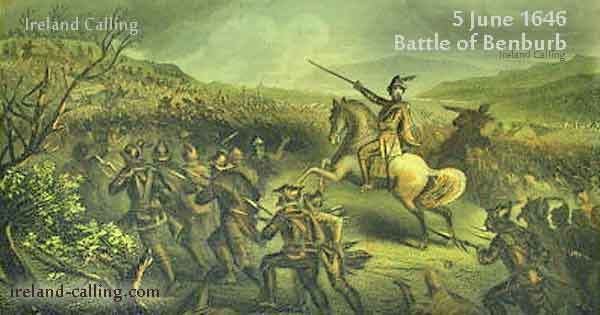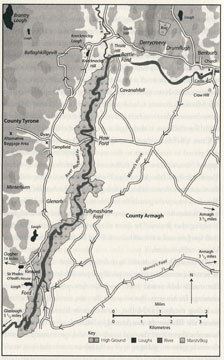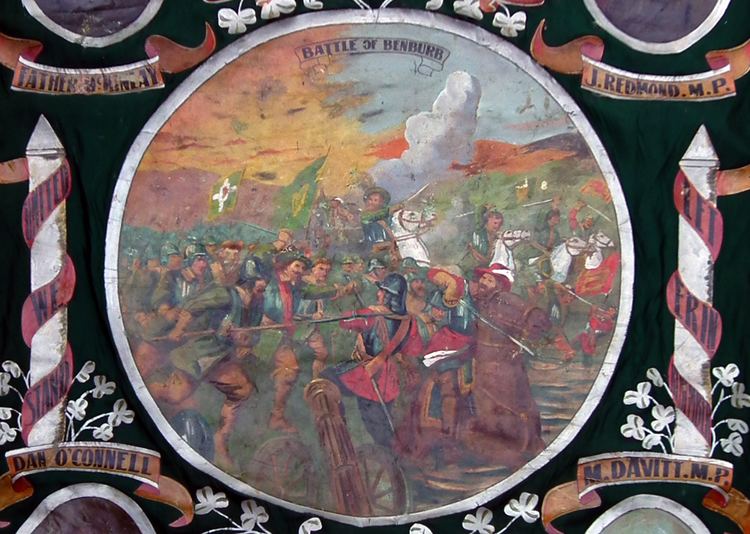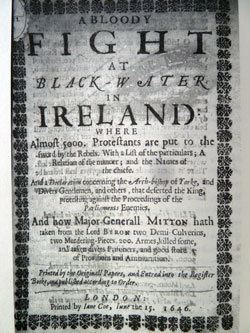5,000 6,000 Date 5 June 1646 | c.300 killed 2–3,000 killed Result Irish Confederate victory | |
 | ||
Combatants Confederate Ireland, Covenanter Similar Battle of Knocknanuss, Siege of Clonmel, Battle of Rathmines | ||
Tommy makem owen roe o neill battle of benburb
The Battle of Benburb took place on 5 June 1646 during the Irish Confederate Wars, the Irish theatre of the Wars of the Three Kingdoms. It was fought between the forces of Confederate Ireland under Owen Roe O'Neill and a Scottish Covenanter and Anglo-Irish army under Robert Monro. The battle ended in a decisive victory for the Irish Confederates and ended the Scottish hopes of conquering Ireland and imposing their own religious settlement there.
Contents
- Tommy makem owen roe o neill battle of benburb
- Tommy makem the battle of benburb
- Background
- The battle
- References

Tommy makem the battle of benburb
Background

The Scots had landed an army in Ulster in 1642, to protect the Scottish settlers there from the massacres that followed the Irish Rebellion of 1641. They also hoped to conquer the country, to destroy Catholicism there and impose Presbyterianism as the state religion. They landed at Carrickfergus and linked up with an army of British settlers based around Derry who were led by Robert Stewart. They cleared Ulster of Irish rebels by 1643, but were unable to advance south of mid-Ulster, which was held by Owen Roe O'Neill, the general of the Irish Confederate Ulster army. Both sides robbed and killed civilians in territory controlled by their enemy, so that by 1646, a sort of no man's land of scorched earth separated the opposing sides. O'Neill remarked of the devastation that Ulster looked, "not only like a desert, but like hell". While the three armies continued to raid into each other's territory, none of them could organise enough supplies to hold any captured territory.

In 1646, Monro and Stewart joined forces, making a major foray into Confederate held territory. According to some accounts, this was an attempt to take the Confederates' capital at Kilkenny; other sources say it was only a major raid. Either way, the combined British force was about 6,000 strong. Monro had ten regiments of infantry, of whom six were Scottish and four were English or Anglo-Irish, and 600 Ulster Protestant cavalry. O'Neill, who was a very cautious general, had previously avoided fighting pitched battles. However, he had just been supplied by the Papal Nuncio to Ireland, Giovanni Battista Rinuccini, with muskets, ammunition and money with which to pay his soldiers' wages. This allowed him to put over 5,000 men into the field – an army slightly smaller than his enemy's. The Covenanters had six cannon, whereas the Confederates had none.
The battle

Monro had assumed that O'Neill would try to avoid his army and so had his soldiers march over 15 miles (24 km) to intercept the Irish force at Benburb, in modern south Tyrone. Gerard Hayes-McCoy wrote, "many of them must have been close to exhaustion before the battle began". Monro's men drew up with their backs to the River Blackwater, facing O'Neill's troops who were positioned on a rise in the ground.

The battle commenced with Monro's artillery firing on the Irish position, but without causing many casualties. Monro's cavalry then charged the Irish infantry, but were unable to break the Confederates' pike and musket formation. When this attack had failed, O'Neill ordered his infantry to advance, pushing the British back into a loop of the river by the push of pike. It was noted that the Irish pikes had longer shafts and narrower heads than those of their opponents, meaning that they outreached them and were "better to pierce". At this point, the fatigue of the British soldiers told against them and they were gradually pushed backwards until their formation collapsed in on itself. The Confederate infantry then broke Monro's disordered formation with a musket volley at point-blank range and fell in amongst them with swords and scians (Irish long knives). Monro and his cavalry fled the scene, as, shortly after, did his infantry. A great many of them were cut down or drowned in the ensuing pursuit. The British force lost between 2,000 and 3,000 killed mostly in the pursuit; the Irish roughly 300.
Benburb was the only time in which an Irish Confederate army won a major field battle between 1641 and 1653. O'Neill's Ulster army showed a discipline and training that was lacking in the Confederate disasters at Dungans Hill and Knocknanauss the following year. O'Neill's victory meant that the Covenanters were no longer a threat to the Confederates, but they remained encamped around Carrickfergus for the rest of the war. However, O'Neill did not follow up his victory but took his army south to interfere in the politics of Confederate Ireland. In particular, he wanted to make sure that the treaty the Supreme Council of the Confederates had signed with the English Royalists would not be ratified.
The fighting is commemorated in the ballad "The Battle of Benburb".
